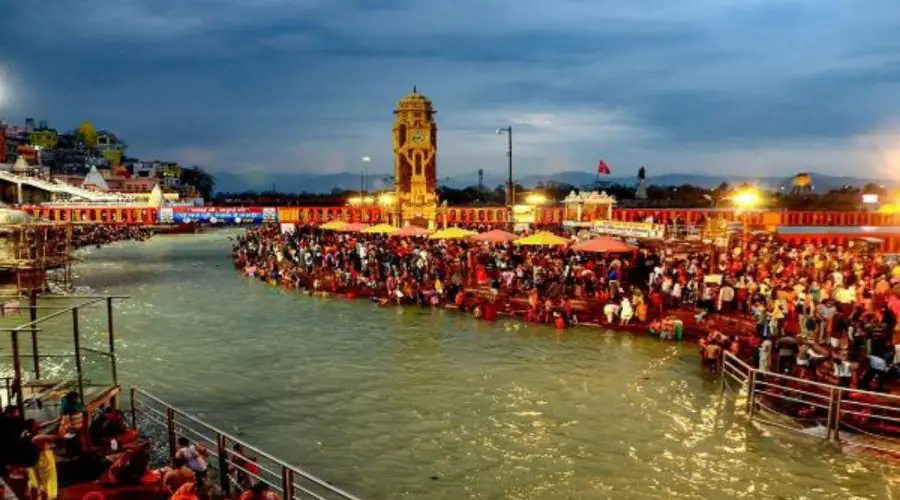Kumbh Mela: Legend, Origin, Significance and Upcoming Dates
The Kumbh Mela is one of the most important Hindu events, held every three years. It is a pilgrimage undertaken by worshippers with the goal of atoning for past transgressions. The Kumbh Mela attracts the largest crowds, with thousands of pilgrims arriving from all over the country.
Every three years, the Kumbh Mela takes place in one of four different locations: Prayag, Ujjain, Nasik, and Haridwar. As a result, Mela visits each location every 12 years.
Haridwar will host the Kumbh Mela in 2021. On Makar Sankranti, January 14, the Haridwar Kumbh Mela began and will run until April. It will last 48 days rather than the normal three and a half months. The Maha Kumbh is being hosted in Haridwar after a twelve-year hiatus.
Future Date of Kumbh Mela
Prayagraj will host the Maha Kumbh Mela in 2025. (formerly known as Allahabad)
Legend of Kumbh Mela
The task of churning the milky ocean was difficult. It would not have been feasible without the assistance of Demons (Asurs). As a result, Gods and Demons came to an agreement to complete this duty, and it was decided that all benefits from the milky ocean, including the nectar of immortality, would be shared equally. When the pot (Kumbh) of nectar appeared during the churning of the milky ocean, a battle erupted between the Gods and the Demons to take it all without sharing it.
According to Hindu mythology, the battle between Gods and Demons lasted twelve years. The pot of nectar was moved from place to place during the battle to keep it secure from demons. Several drips of nectar were spilt at twelve different locations throughout this time. Four of the twelve spots were on Earth, while the remaining eight were in the sky.
Four sites on Earth, Allahabad, Nasik, Haridwar, and Ujjain, were sacred as a result of the spilling of nectar drops. As a result, only these four locations host the Kumbh Mela.
The Kumbha Maha Parva is only arranged when the Sun, Moon, and Brihaspati construct a particular Yoga by putting themselves into precise Rashi, much as they did in protecting the jug of nectar from demons.
Significance of Kumbh Mela
The name ‘Kumbh’ literally translates to ‘nectar.’ Legend has it that Sage Durvasa’s curse crippled gods and caused havoc in the world. The Gods were then persuaded by Lord Brahma to use asuras to churn out the nectar of immortality. However, when the asuras learned that the gods had no intention of sharing the nectar with them, they pursued them for 12 days, during which time the nectar dropped at four different spots where the Kumbh Mela is conducted.
The Kumbh Mela festival is thought to be around 2000 years old. The oldest documented chronicle of the Kumbh Mela was discovered in the report of Xuanzang, a Chinese explorer who visited India during the reign of King Harshavardhana.
Frequently Asked Questions
1. Why is Kumbh Mela every 12 years?
The battle for the Kumbh, or sacred pitcher, between Gods and demons lasted 12 divine days, which is equivalent to 12 years in human terms. As a result, the Kumbh Mela is held every 12 years and takes place at the above-mentioned sacred sites or holy sites.
2. Which place is Maha Kumbh Mela?
Kumbh Mela, also known as Kumbha Mela, is a Hindu religious festival held four times every 12 years, with the location of the celebrations rotating between four pilgrimage sites on four sacred rivers: Haridwar on the Ganges River, Ujjain on the Shipra, Nashik on the Godavari, and Prayagraj on the Godavari.
3. Is Kumbh Mela the largest gathering on Earth?
According to James Lochtefeld, the Kumbh mela is “widely considered as the world’s largest religious gathering.”
4. How many Kumbh are there in India?
The four Kumbh Mela sites of Allahabad, Haridwar, Ujjain, and Nashik are located on the banks of sacred rivers and were consecrated by the drop of Ambrosia from heaven.

